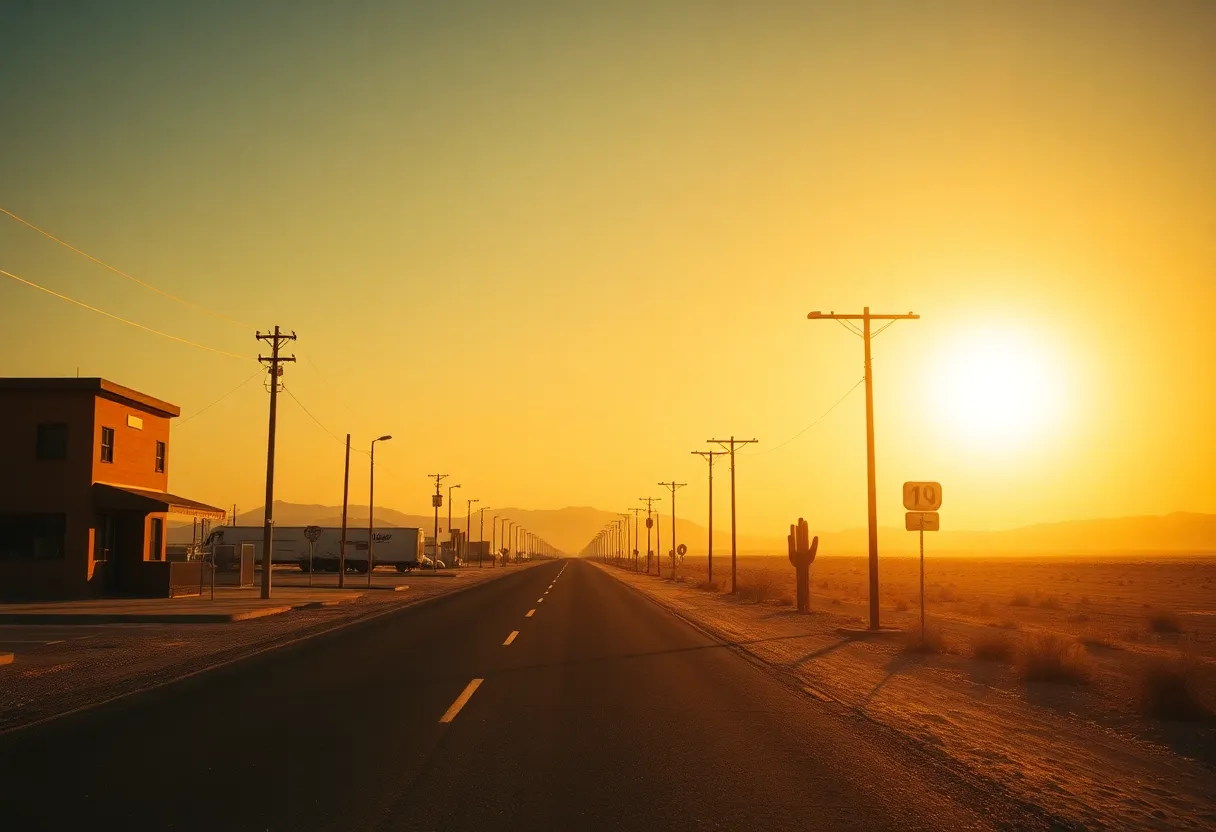News Summary
Arizona is grappling with a concerning rise in heat-related deaths, largely attributed to energy poverty exacerbated by government policies. A tragic case highlights these dangers, as vulnerable families struggle with the costs of cooling systems during extreme heat. Experts warn that inadequate measures to tackle heat illness may lead to more fatalities. With rising energy costs and a sharp increase in utility debts, many low-income households face risks during summer heatwaves. Advocates are calling for urgent interventions to support those most vulnerable and improve public health responses.
Phoenix, Arizona – The state of Arizona is experiencing a troubling surge in heat-related deaths, exacerbated by the growing issue of energy poverty tied to previous government policies, particularly during the Trump administration. A recent case highlights the dangers faced by vulnerable populations: Richard Chamblee, 52, tragically died from overheating after his air conditioning unit failed during a scorching heatwave that reached 115°F (46°C). Despite efforts from his family to cool him down with a window AC unit, fans, and ice packs, the extreme indoor temperatures remained dangerously high, resulting in a critical core temperature of 108°F upon his arrival at the emergency room, where he could not be saved.
The Chamblee family, who live paycheck to paycheck, represent a growing number of households unable to afford the necessary repairs for their cooling systems during extreme heat events. Nationwide, one in five of the lowest-income households lack access to air conditioning, while approximately 30% depend solely on window units to combat the heat. The prevalence of energy poverty is alarming; 60% of American households struggle financially, with one in three reporting that they must forego basic necessities like food or medication to pay their energy bills.
Experts warn that heat is the deadliest weather phenomenon both in the U.S. and globally, claiming nearly half a million lives annually according to the World Health Organization. As the climate crisis escalates, heatwaves are becoming more frequent and severe in the United States. This year’s increased heat also marks the 30-year anniversary of a devastating heatwave in Chicago that left over 730 victims primarily among low-income and elderly residents lacking adequate cooling resources.
The article asserts that the U.S. government bears some responsibility for failing to adequately recognize and quantify the extent of heat-related illnesses and deaths. Increased financial hardship, driven by Trump’s energy policies and cuts to welfare programs, is expected to lead to more indoor heat deaths among susceptible populations. About one in three American households faces energy poverty, severely limiting access to cooling systems during dangerously high temperatures.
Projected increases in household electricity costs are expected to reach an average of $784 per summer by 2025, further straining low-income families. The Chamblee family previously encountered challenges with energy poverty until they installed solar panels, which significantly lowered their cooling costs. However, recent administration cutbacks to federal solar tax credits are projected to result in higher electricity expenses and the potential dismantling of essential welfare programs such as food stamps. Additionally, Arizona’s regulatory body voted to eliminate a renewable energy standard, leading to concerns about increased energy prices and worsening energy poverty conditions.
Utility providers across the nation are expected to implement multibillion-dollar rate hikes to address energy infrastructure upgrades and inflation, causing household utility debt to reach crisis levels – an anticipated peak of $25 billion by the end of 2025 with 4 million disconnections forecasted. Vulnerable individuals, especially those on fixed incomes or suffering from medical conditions, face heightened risks of heat-related fatalities amidst escalating energy costs. In Maricopa County, nearly a quarter of heat-related fatalities occurred indoors, often involving victims from poorly insulated mobile homes and RVs where cooling systems fail.
Many heat-related deaths are linked to individuals who possess functioning air conditioning but do not operate them due to financial constraints or lack of electricity. Criticism of the government has mounted regarding the underreporting of heat-related deaths, with advocates calling for standardized methods to accurately account for these fatalities. Recent data indicate that Maricopa County confirmed 97 heat-related deaths in 2025, a figure significantly lower than the previous year, prompting skepticism regarding the accuracy of government statistics amid a climate that continues to rise.
The Arizona public health association emphasizes the urgency of implementing strategic interventions to address the escalating challenges related to heat exposure. Capitalizing on robust funding and effective policies that address the root causes of heat-related illness and death is essential. Advocacy groups are highlighting the immediate need for mental health support and affordable housing solutions to protect those most vulnerable during periods of extreme heat.
Deeper Dive: News & Info About This Topic
- AZ Central: Focus on Arizona Heat Deaths
- Wikipedia: Heat Wave
- The Guardian: Death Toll from Extreme Heat
- Google Search: Extreme Heat Deaths in Arizona
- ABC15: Uncounted Heat-Related Deaths in Arizona
- Google Scholar: Heat Related Deaths Arizona
- AZ Capitol Times: Arizona’s Heat Deaths
- Encyclopedia Britannica: Heat
- Governing: Heat-Related Deaths in Phoenix
- Google News: Arizona Heat Deaths

Author: STAFF HERE PHOENIX WRITER
The PHOENIX STAFF WRITER represents the experienced team at HEREPhoenix.com, your go-to source for actionable local news and information in Phoenix, Maricopa County, and beyond. Specializing in "news you can use," we cover essential topics like product reviews for personal and business needs, local business directories, politics, real estate trends, neighborhood insights, and state news affecting the area—with deep expertise drawn from years of dedicated reporting and strong community input, including local press releases and business updates. We deliver top reporting on high-value events such as the Waste Management Phoenix Open, Cactus League Spring Training, and Arizona State Fair. Our coverage extends to key organizations like the Greater Phoenix Chamber of Commerce and Visit Phoenix, plus leading businesses in technology and healthcare that power the local economy such as Intel and Banner Health. As part of the broader HERE network, including HERETucson.com, we provide comprehensive, credible insights into Arizona's dynamic landscape.





